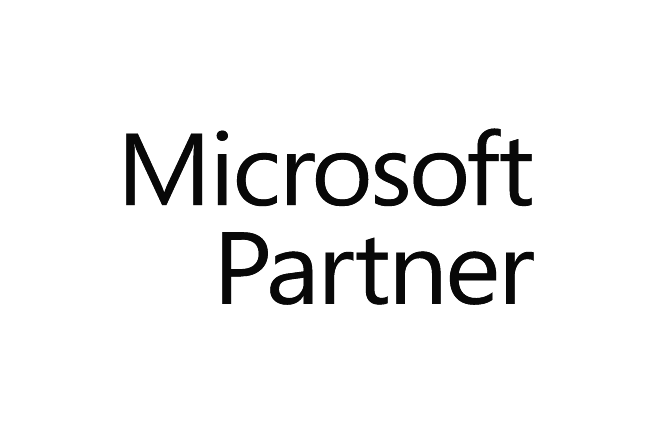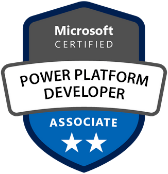
Microsoft Official Course (MOC)
Course
Course PL-400T00-A: Microsoft Power Platform Developer
(5 days)
About this Course:
Course Goals/Skills Gained:
- Create a technical design
- Configure Common Data Service
- Create and configure Power Apps
Course Format:
[table id=1 /]
Course Language Option
[table id=2 /]
You can choose the language in which the training will be conducted – Bulgarian or English. All our instructors are fluent in English.
Student Guides:
The training materials are available in electronic format. They can be used online / offline on any device. Lifetime access.
Lab Environment:
Each student has their own lab environment where the exercises are conducted, part of the course. You do not need to install software on a computer or special hardware requirements. Participants in a face-to-face format in our Training Center have an individual computer during the training.
At Course Completion:
[table id=3 /]
Lifetime access to a video archive with recording of each individual lecture. Official internationally recognized certificate for completed training course.
Course Duration:
-
5 working days (09:00 – 17:00) or 40 hours of training (theory and practice)
Payment
An application for an invoice is accepted at the time of enrollment in the respective course. An invoice is issued within 7 days of confirming the payment.
Upcoming Courses
[tribe_events_list category=”azure”]
For more information, use the contact form. We will contact you to confirm the dates.
-
PL-400: Microsoft Power Platform Developer
Curriculum
- 10 Sections
- 48 Lessons
- Lifetime
- Module 1: Create a model-driven application in Power Apps9
- 2.1Introduction to model-driven apps and Common Data Service
- 2.2Get started with model-driven apps in Power Apps
- 2.3Create and manage entities in Common Data Service
- 2.4Create and manage fields within an entity in Common Data Service
- 2.5Working with option sets in Common Data Service
- 2.6Create a relationship between entities in Common Data Service
- 2.7Define and create business rules in Common Data Service
- 2.8Create and define calculation or rollup fields in Common Data Service
- 2.9Get started with security roles in Common Data Service
- Module 2: Create a canvas app in Power AppsThis module introduces you to Power Apps, helps you create and customize an app, and then manage and distribute it. It will also show you how to provide the best app navigation, and build the best UI using themes, icons, images, personalization, different form factors, and controls.7
- 3.1Get started with Power Apps
- 3.2Customize a canvas app in Power Apps
- 3.3Manage apps in Power Apps
- 3.4Navigation in a canvas app in Power Apps
- 3.5How to build the UI in a canvas app in Power Apps
- 3.6Use and understand Controls in a canvas app in Power Apps
- 3.7Document and test your Power Apps application
- Module 3: Master advance techniques and data options in canvas appsThis module will help you use advanced formulas, perform custom updates, performance checks and testing. It will also help you to improve user's experience, use custom connectors and focus on working with data source limits.8
- 4.1Use imperative development techniques for canvas apps in Power Apps
- 4.2Author an advanced formula that uses tables, records, and collections in a canvas app in Power Apps
- 4.3Perform custom updates in a Power Apps canvas app
- 4.4Complete testing and performance checks in a Power Apps canvas app
- 4.5Work with relational data in a Power Apps canvas app
- 4.6Work with data source limits (delegation limits) in a Power Apps canvas app
- 4.7Connecting to other data in a Power Apps canvas app
- 4.8Use custom connectors in a Power Apps canvas app
- Module 4: Automate a business process using Power AutomateThis module introduces you to Power Automate, teaches you how to build workflows, and how to administer flows.7
- 5.1Get started with Power Automate
- 5.2Build more complex flows with Power Automate
- 5.3Introduction to business process flows in Power Automate
- 5.4Introduction to business process flows in Power Automate
- 5.5Create an immersive business process flow in Power Automate
- 5.6Understand advanced business process flow concepts in Power Automate
- 5.7Introduction to expressions in Power Automate
- Module 5: Introduction to developing with Power PlatformThis module is the first step in learning about platform, tools, and the ecosystem of the Power Platform3
- Module 6: Extending the Power Platform Common Data ServiceThis module looks at the tools and resources needed for extending the Power Platform. We'll start with looking at the SDKs, the extensibility model, and event framework. This learning path also covers when to use plug-ins. Configuration of plug-ins as well as registering and deploying plug-ins.2
- Module 7: Extending the Power Platform user experience Model Driven appsThis module describes how to create client scripting, perform common actions with client script, and automate business process flow with client scrip. Learn about what client script can do, rules, and maintaining scripts. Discover when to use client script as well as when not to use client script.3
- Module 8: Create components with Power Apps Component FrameworkThis module describes how to get started with Power Apps Component Framework with an introductory module on the core concepts and components. Then it shows you how to build a component and work with advanced Power Apps Component Framework features.3
- Module 9: Extend Power Apps portalsThis module describes how to transform a content portal into a full web app interacting with Common Data Service. We will also cover the options available to customizers and developers to extend the portal functionality and integrate with Office 365, Power Platform, and Azure components.4
- Module 10: Integrate with Power Platform and Common Data ServiceThis module describes how to integrate with Common Data Service using code by learning about Common Data Service API. Get an in-depth overview of options available with Common Data Service to integrate data and events to Azure.2
Instructors
Requirements
- Candidates should have an introductory knowledge of Power Platfom
- Candidates should have development experience that includes JavaScript, JSON, TypeScript, C#, HTML, .NET, Microsoft Azure, Microsoft 365, RESTful Web Services, ASP.NET, and Power BI
Target audiences
- Candidates for this course design, develop, secure, and troubleshoot Power Platform solutions. Candidates implement components of a solution that include application enhancements, custom user experience, system integrations, data conversions, custom process automation, and custom visualizations. Candidates will gain applied knowledge of Power Platform services, including in-depth understanding of capabilities, boundaries, and constraints. Candidates should have development experience that includes JavaScript, JSON, TypeScript, C#, HTML, .NET, Microsoft Azure, Microsoft 365, RESTful Web Services, ASP.NET, and Power BI.









